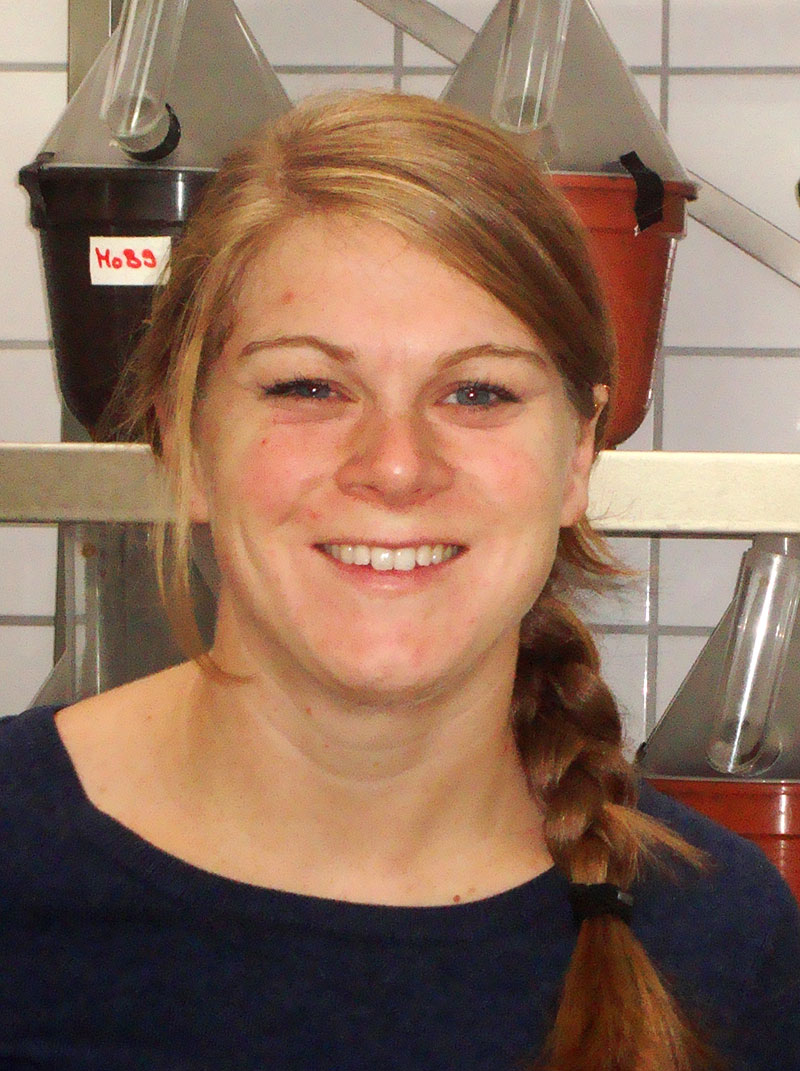Petra Schedwill - english

University of Freiburg
Biology I, Evolution & Ecology
Hauptstraße 1, Room 1040
D-79104 Freiburg
Phone. ++49/761/203-2582
E-Mail: petraschedwill@hotmail.com
CV
- Since 2015 PhD: “The geographic mosaic of co-evolution in phoretic mites” Supervisors: Prof. Dr. Judith Korb, Dr. Volker Nehring Stipend by IGA University of Freiburg
- 2011-2014 Master of Science (Biology) at the University of Freiburg, including ERASMUS studies on Guadeloupe (France) Master Thesis: “Coolidge effect in the burying beetle Nicrophorus vespilloides (Coleoptera: Silphidae): Mechanisms and consequences of a specific behavior” Supervisor: Prof. Dr. Josef K. Müller
- 2008-2011 Bachelor of Science (Biology) at the University of Freiburg
PhD project
Local adaptation to the environment is a major factor responsible for the remarkable biodiversity on our planet. As lives of organisms are interconnected, most if not all species interact with others.
Co-evolution often shapes local adaptation to symbionts, resulting in a geographic mosaic of co-evolution, where fitness is determined by a gene (focal species) by gene (symbiont) by environment interaction (GxGxE).
The phoretic mite Poecilochirus carabi, in their state as deuteronymphs, use their hosts, the burying beetle Nicrophorus vespilloides, for transport. To reproduce, the mites use the same resource as the beetles (small vertebrate carcasses).It is important that development time of the mites is adapted to the duration of brood care of the beetles. Changing climate conditions or switching to another symbiont (phoront or host) can thus require changes in adaptation (of co-evolution).
The aim of my study is to test predictions of the geographic mosaic of co-evolution theory in natural populations of N. vespilloides and P. carabi. I test the important traits of co-evolution in laboratory experiments and analyse genetic differentiation between populations. Furthermore I want to investigate predictions for ecological speciation.
- Methods:
- Pitfall-Setup to collect burying beetles and its mites of different German populations
- Artificial selection on the development time of P. carabi
- Fitness measurements of beetles and mites in different population combinations
- DNA isolation and primer design for sequencing and microsatellite analysis
Phoresy: N. vespilloides and P. carabi -- Pitfall-Setup
Poster presentations
- Schedwill, P., Geiler, A., Nehring, V. “Effects of artificial selection on development time of Poecilochirus carabi”, 06-09.03.2016, Graduate Meeting Evolutionary Biology and Ecology, Greifswald, Germany.
- Schedwill, P., Müller, J.K. “The adaptive significance of the Coolidge effect for the burying beetle Nicrophorus vespilloides”, 09.-12.09.2011, 104. Jahrestagung der Deutschen Zoologischen Gesellschaft, Saarbrücken, Germany.
Publications
- Schedwill, P (2014): Étude de la population de Mabuya cf. desiradae (Squamata : Mabuyidae) de Terre de Bas (Îles de la Petite Terre, commune de La Désirade, Guadeloupe). Report. ERASMUS Programme. Univ. Antilles-Guyane, Association Tité, ONF, Association AEVA, Guadeloupe, 61 pp.
- Schedwill, P., Geiler, A. M., & Nehring, V. (2018). Rapid adaptation in phoretic mite development time. Scientific reports, 8.
- Schedwill, P., Eggert, A. K., & Müller, J. K. (2018). How burying beetles spread their seed: The Coolidge effect in real life. Zoologischer Anzeiger, 273, 210-217.



